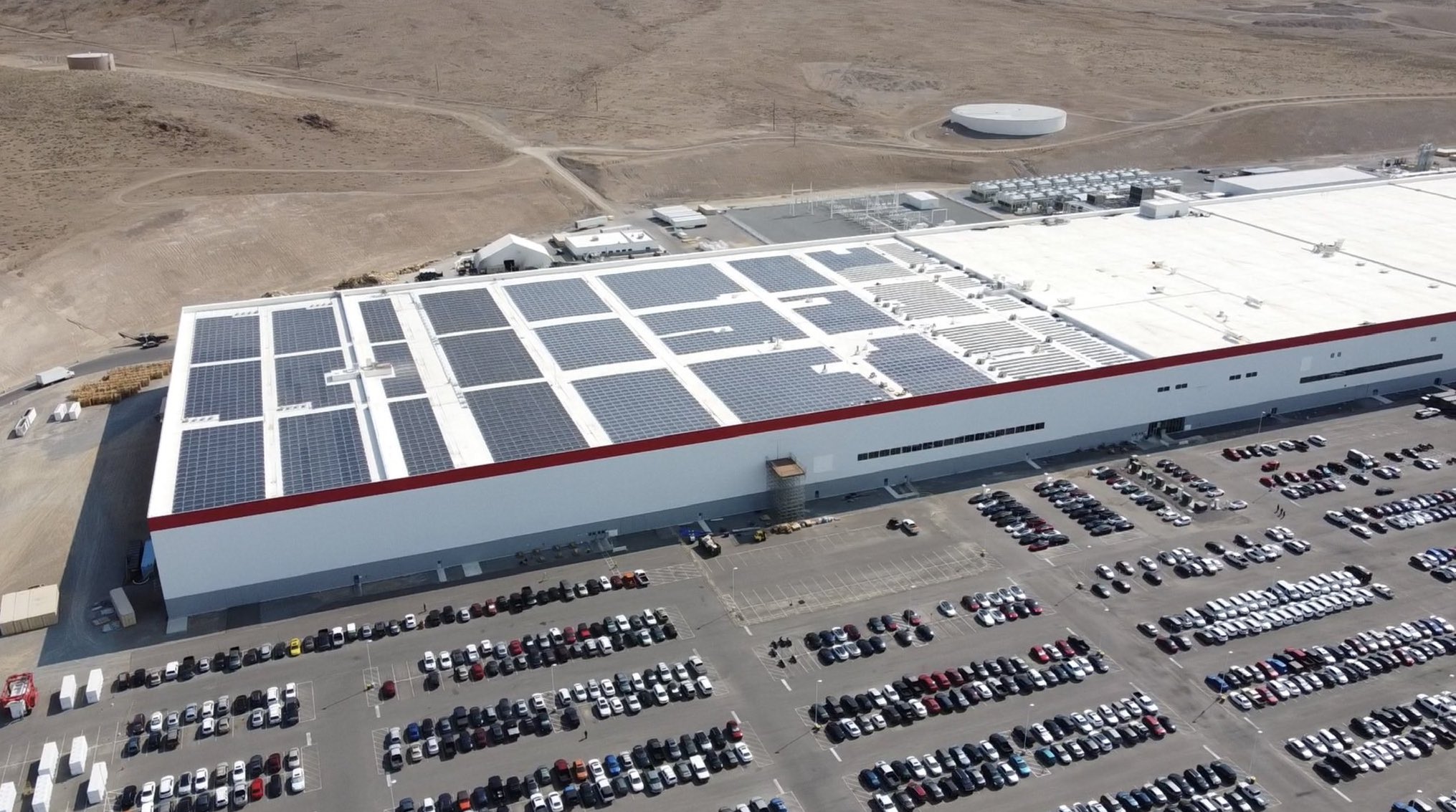
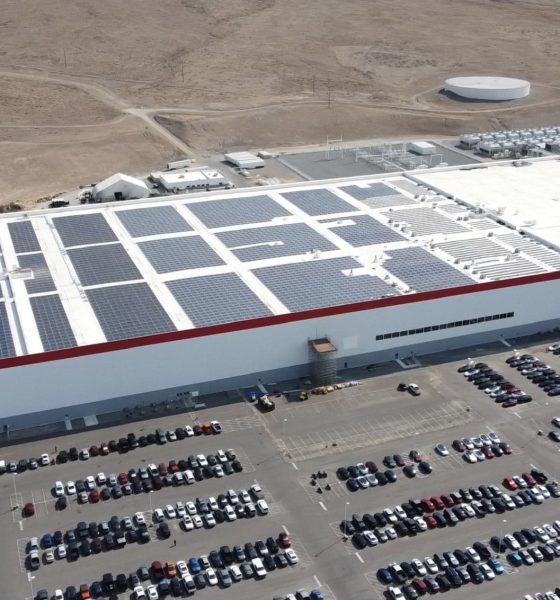
News
Tesla Gigafactory Nevada ramps installation of new rooftop solar panels
Tesla appears to be ramping its efforts to cover Gigafactory Nevada’s roof with solar panels. This was hinted at in a recent flyover of the site, which showed several new rows of solar panels being set up on the roof of the massive facility.
The images were shared recently on Twitter by the Tesla Owners Silicon Valley group, to much appreciation from the electric car community. Interestingly enough, it appears that a large number of new solar panels in the facility’s roof have been set up only in recent weeks. This is evidenced by satellite images archived by Building Tesla, which shows that as late as September 24, the volume of solar panels on the facility was much lesser.
With the recent pace of Giga Nevada’s solar panel installations, it would not be surprising if most of the existing facility’s roofing gets covered with solar panels by the time the year ends. Such a milestone would definitely be lauded by the electric vehicle community and Tesla supporters, seeing as the expansion of Giga Nevada’s photovoltaic systems has been largely irregular so far.
Solar panels were initially spotted on the roof of the massive facility in February 2018. Over the next few months, the PV system was expanded until two massive rows of solar panels could be seen in aerial photos of the site. By August 2018, the installation of four rows of solar panels has been completed, and then the project was halted. Giga Nevada’s rooftop solar panels remained unchanged until October 2019, when a new set of panels were installed until late November.
Completing the installation of solar panels in Gigafactory Nevada would be a key milestone for Tesla, and it would be a massive step for the facility, which has remained about 30% complete for years. Tesla, after all, has always maintained that the Nevada facility is designed to run on sustainable energy. A massive rooftop solar installation definitely helps the company move towards such a goal.
Gigafactory Nevada plays a key part in Tesla’s operations in the United States. Operated jointly by Tesla and Panasonic, the facility is responsible for the production of the Model 3 and Model Y’s 2170 cells and powertrain. Tesla and Panasonic have been pushing the boundaries of battery cell production in the site, and today, even with the facility being just 30% complete physically, it is already the largest battery cell manufacturing facility in the market.

News
Tesla Model Y Standard Full Review: Is it worth the lower price?
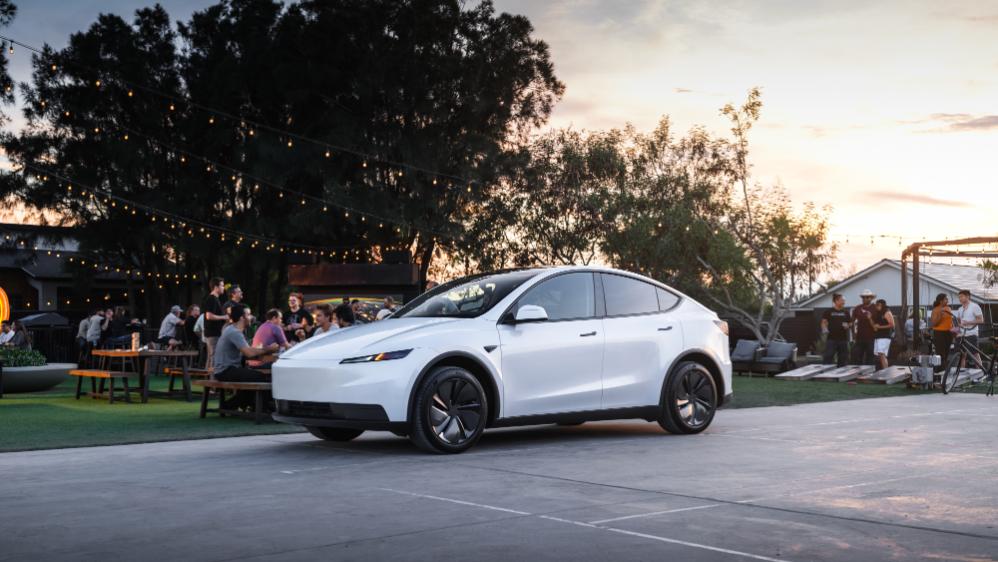
Tesla launched the Model Y Standard as an attempt to offer affordable electric vehicles to consumers now that the $7,500 EV tax credit is gone. We were able to spend four days with the car, and it was more than enough time to determine whether or not the car was worth the $9,000 discount compared to the Premium All-Wheel-Drive configuration, which is what I drive daily.
The Model Y Standard was stripped of some of the features that are present in the Premium trims of the Model Y: no glass roof, a sound system with roughly half the speakers, fewer acoustic-lined glass windows, less storage, and less functionality from an interior standpoint.
However, there are some real advantages to purchasing a Standard Model Y, and there are a handful of situations where this car would be well-suited.
Do I think it is worth the lower price? Well, I’ll get to that later in this article.
Initial Thoughts
In my first impressions review of the Model Y Standard, I talked about the face-value differences between my Model Y Premium and the new, more affordable trim. You will first notice the lack of storage between the front two seats, as the cupholder and additional storage bin sliding doors are void. You still get the cupholders, but they are exposed, which isn’t a huge deal, but it definitely takes away from the sleek look the Premium trim offers.
Additionally, the textile seats replace those of the vegan leather that is available in the upper-level trims. I mentioned previously that I could take or leave the vegan leather for the textile seats, as they are easy to clean, quick drying, and hide oils from your skin much better than leather does.
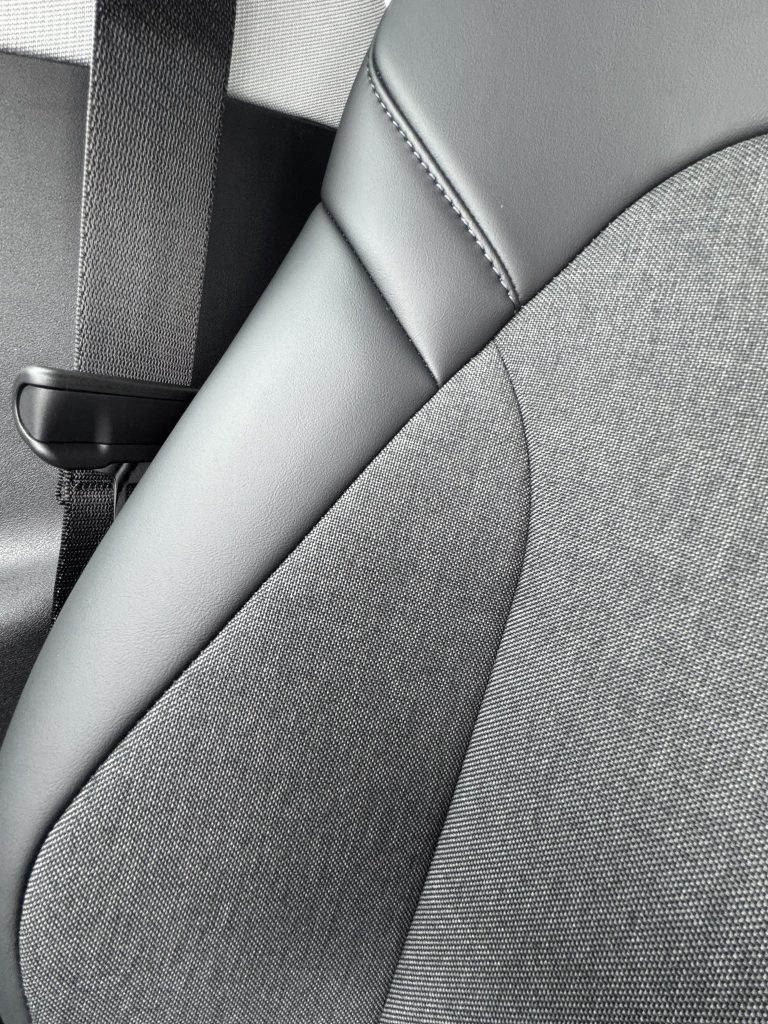
However, there comes one big sacrifice that I have been spoiled by, as the textile seats are not ventilated, so say goodbye to cooling your keister in the Summertime.
The lack of a glass roof is something many owners might not even notice. However, I have been spoiled by the glass roof in my car, and I look out of it every time I’m in my car. It is one of my favorite features, without a doubt. While it would not be a dealbreaker for me, it would be something I would miss terribly.
Things I Noticed After Several Days
Cabin Noise
One of the biggest things I noticed after the first two days in the Model Y Standard is that the cabin is much louder than the Premium. This is because Tesla did not acoustically line all of the glass in the Standard configuration, as it did in the Premium. The side windows are not treated, just the windshields. Therefore, you notice the noise level in the cabin is louder than in the Premium.
If you had not been driving in a Premium trim for a few months, you might not notice it. However, it is something that is a big sacrifice when moving to a different trim level, especially one that is less premium than what you might currently drive.
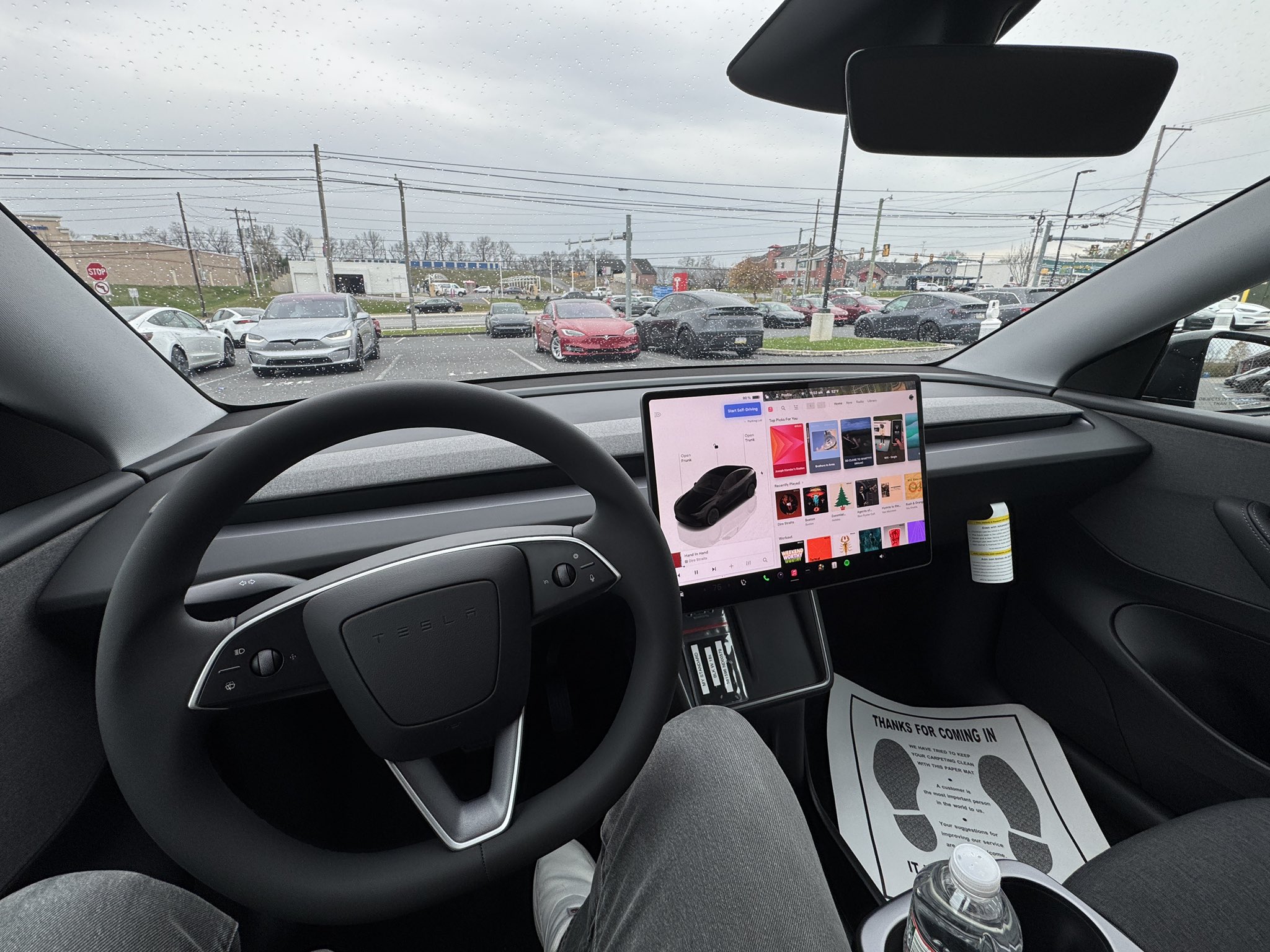
I have always been so shocked at how amazingly quiet the Premium trim’s cabin is; my Model Y is extremely peaceful, even when I’m sitting in bumper-to-bumper traffic, and people have modified mufflers and exhaust systems, tractor-trailers are going by, or crotchrockets are zipping by on the interstate.
This is a huge difference between the two cars, and it is something that is really hard to get used to. I know, first-world problems, right? But when you’re paying between $39,990 and $48,990 for a car, those little things truly do matter.
Stereo System Differences
Another thing I was very aware of was how weak the sound system is. I think if I had bought a Standard Model Y, I would have looked at having the speakers and subwoofers upgraded; I was almost disappointed in how much of a change it was between the two cars.
When I finally picked up my Model Y Premium on Friday (which had been detailed by the awesome team at Tesla Mechanicsburg), the first thing I did was crank up the volume and listen to some music. I really missed having a premium sound system.
Ride Quality
There are virtually no differences between the two cars in terms of ride quality. They are both extremely fun to drive, and the suspension in the Model Y Standard feels perhaps a little bit stiffer than the Premium. Regardless, I didn’t truly notice all that much of a change.
Driving this car around windy roads and tight turns was just as fun as my Model Y Premium. It was a blast to test out, and the slight change in feel was welcome. It’s always fun to drive new cars.
Performance
This is the first EV I’ve ever ridden in where I did not feel that awesome sensation of instant torque. It’s still a quick car, but it is missing that pep in its step that many of us have become accustomed to.
If you want to get someone’s true reaction to EV acceleration, let me just put it this way: This is not the car to do it in.
Some Little-Known Facts About the Model Y Standard
Most of us know that the Model Y Standard has a glass roof, but it is opaque, so even if you took out the headliner, you still would not see out of it. However, there is an interesting little tidbit from a Service perspective that does not make much sense.
If the Model Y glass roof cracks or is broken and needs to be replaced, Service is required to pull off the entire headliner and topside interior to access the glass. It cannot be replaced from the outside. In the Premium, because the glass is exposed, it is a much simpler process to replace the glass. This was an interesting thing I learned.
Additionally, the seat controls are only available on the center screen, which makes it difficult to adjust the seat if you are larger than the person who sat in the car previously. In order to adjust the seat, you’ll have to lean over the chair, access the controls from the screen, and adjust it manually before getting in.
Is the Tesla Model Y Standard Worth the Cheaper Price?
For an additional $9,000 to buy the Model Y Premium AWD, you would get a more capable powertrain, a quieter cabin, better performance, an upgraded interior, more storage, a better sound system, and more luxury features.
To me, the Standard is a car that seems extremely ideal for a teenager’s first vehicle (I got a $1,500 1998 VW Jetta K2 with 200,000 miles when I was 16), or a fleet vehicle. This would be the perfect car for salespeople to use: it does not have all the bells and whistles, it is efficient, and it is just what is needed to drive around to meetings.
For a personal car, it really depends on what you think you need. Admittedly, I’ve been spoiled by the Premium configuration, and personally, I wouldn’t go down to the Standard after owning a Premium trim.
News
Tesla’s new Holiday perk is timed perfectly to make FSD a household name
Tesla AI4 owners get FSD (Supervised) through Christmas, New Year’s Eve and well into the post-holiday travel season.

Tesla quietly rolled out a free Full Self-Driving (Supervised) trial for roughly 1.5 million HW4 owners in North America who never bought the package, and the timing could very well be genius.
As it turns out, the trial doesn’t end after 30 days. Instead, it expires January 8, 2026, meaning owners get FSD (Supervised) through Christmas, New Year’s Eve and well into the post-holiday travel season. This extended window positions the feature for maximum word-of-mouth exposure.
A clever holiday gift
Tesla watcher Sawyer Merritt first spotted the detail after multiple owners shared screenshots showing the trial expiring on January 8. He confirmed with affected users that none had active FSD subscriptions before the rollout. He also observed that Tesla never called the promotion a “30-day trial,” as the in-car message simply reads “You’re Getting FSD (Supervised) For the Holidays,” which technically runs until after the new year.
The roughly 40-day period covers peak family travel and gatherings, giving owners ample opportunity to showcase the latest FSD V14’s capabilities on highway trips, crowded parking lots and neighborhood drives. With relatives riding along, hands-off highway driving and automatic lane changes could become instant conversation starters.
Rave reviews for FSD V14 highlight demo potential
FSD has been receiving positive reviews from users as of late. Following the release of FSD v14.2.1, numerous owners praised the update for its smoothness and reliability. Tesla owner @LactoseLunatic called it a “huge leap forward from version 14.1.4,” praising extreme smoothness, snappy lane changes and assertive yet safe behavior that allows relaxed monitoring.
Another Tesla owner, @DevinOlsenn, drove 600 km without disengagements, noting his wife now defaults to FSD for daily use due to its refined feel. Sawyer Merritt also tested FSD V14.2.1 in snow on unplowed New Hampshire roads, and the system stayed extra cautious without hesitation. Longtime FSD tester Chuck Cook highlighted improved sign recognition in school zones, showing better dynamic awareness. These reports of fewer interventions and a more “sentient” drive could turn family passengers into advocates, fueling subscriptions come January.
Elon Musk
Elon Musk predicts AI and robotics could make work “optional” within 20 years
Speaking on entrepreneur Nikhil Kamath’s podcast, Musk predicted that machines will soon handle most forms of labor, leaving humans to work only if they choose to.
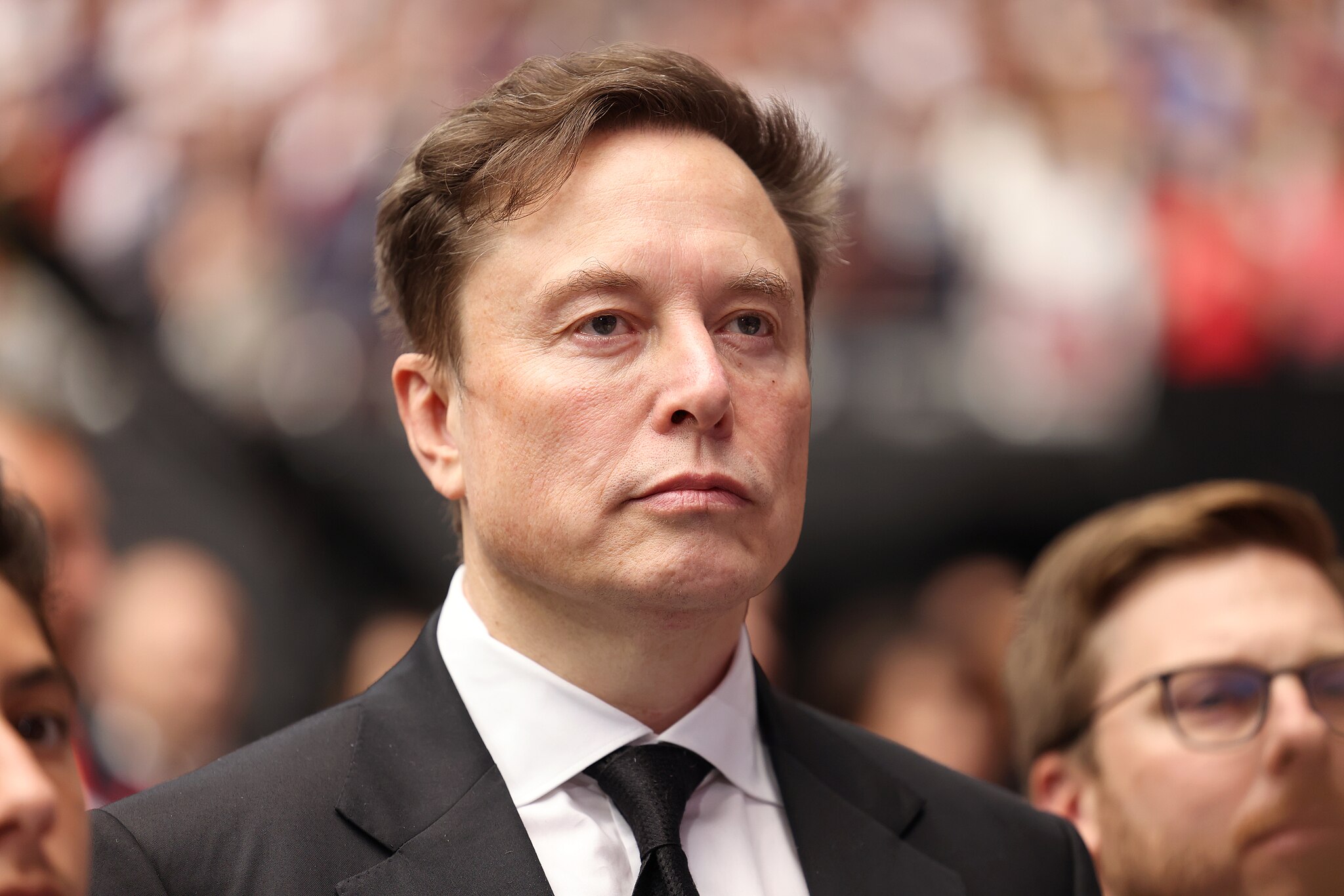
Elon Musk stated that rapid advances in artificial intelligence and robotics could make traditional work unnecessary within two decades.
Speaking on entrepreneur Nikhil Kamath’s podcast, Musk predicted that machines will soon handle most forms of labor, leaving humans to work only if they choose to.
Work as a “hobby”
During the discussion, Musk said the accelerating capability of AI systems and general-purpose robots will eventually cover all essential tasks, making human labor a choice rather than an economic requirement. “In less than 20 years, working will be optional. Working at all will be optional. Like a hobby,” Musk said.
When Kamath asked whether this future is driven by massive productivity growth, Musk agreed, noting that people will still be free to work if they enjoy the routine or the challenge. He compared future employment to home gardening, as it is something people can still do for personal satisfaction even if buying food from a store is far easier.
“Optional” work in the future
Elon Musk acknowledged the boldness of his claim and joked that people might look back in 20 years and say he was wrong. That being said, the CEO noted that such a scenario could even happen sooner than his prediction, at least if one were to consider the pace of the advancements in AI and robotics.
“Obviously people can play this back in 20 years and say, ‘Look, Elon made this ridiculous prediction and it’s not true,’ but I think it will turn out to be true, that in less than 20 years, maybe even as little as ten or 15 years, the advancements in AI and robotics will bring us to the point where working is optional,” Musk said.
Elon Musk’s comments echo his previous sentiments at Tesla’s 2025 Annual Shareholder Meeting, where he noted that Optimus could ultimately eliminate poverty. He also noted that robots like Optimus could eventually provide people worldwide with the best medical care.









